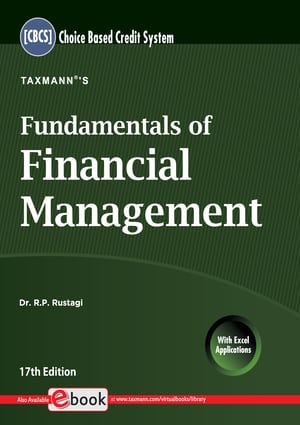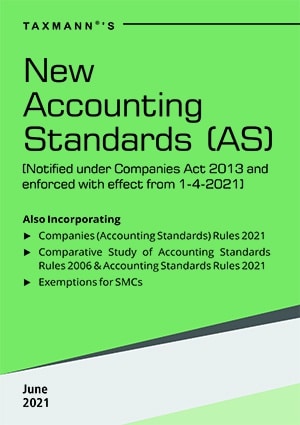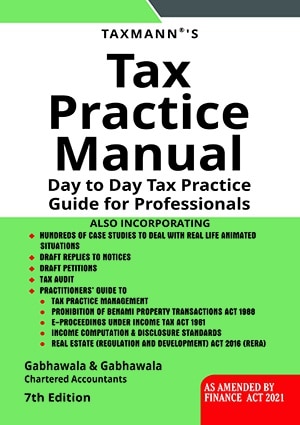Description
This book has been designed to discuss the fundamental concepts, procedures and practices of Financial Management.
This book aims to fulfil the requirement of students for undergraduate courses in commerce and management, particularly the B.Com. (H) Vth Semester/Annual Mode of Delhi University and other Central Universities throughout India.
The Present Publication is the 17th Edition, authored by Dr. R.P. Rustagi, with the following noteworthy features:
- [Simple, Systematic & Comprehensive Explanation] The subject matter is presented in a simple, systematic method along with a comprehensive explanation of the concept and theories underlying financial management. The book tries to explain the subject matter in a non-mathematical and non-technical way
- [Student-Oriented Book] This book has been developed keeping in mind the following factors:
- Interaction of the author/teacher with their students in the classroom
- Shaped by the authors’/teachers’ experience of teaching the subject matter at different levels
- Reactions and responses of students have also been incorporated at different places in the book
- [MCQs, Graded Illustrations and Theoretical Questions] have been added at the end of different chapters
- [Financial Decision Making through EXCEL] is explained with the help of several numerical examples from different topics
- [Latest Question Papers] Questions that appeared in the Latest Question Paper of Delhi University have been incorporated at appropriate places
- [New Chapter on Capital Budgeting: Techniques of Evaluation] has the following features:
- Basic principles of calculation of Cash Flows for capital budgeting proposals have been summarised for quick reference
- A new section to deal with the Analysis of Risk in Capital Budgeting proposals has been introduced
- Discussions on the Modified Internal Rate of Return have been inserted.
- The structure of this book is as follows:
- Synopsis (Chapter Plan)
- Main Body (Contents)
- Points to Remember
- Graded Illustrations
- Object Type Questions (True/False)
- Multiple Choice Questions
- Theoretical Assignments
- Problems (Unsolved Questions with Answers)
Contents of this book are as follows:
- Background
o Introduction to financial management, finance function and financial decision-making have been explained in Part I. The basic concepts of Risk-Return trade-off and the Time Value of Money have also been explained in detail in Part I, comprising of Chapters 1 and 2
- Long-Term Investment Decisions: Capital Budgeting
o Part II of the book deals with long-term investment decisions, i.e. the capital budgeting process. Chapter 3 explains the significance and process of capital budgeting. The different techniques of evaluation of capital budgeting proposals have been discussed in Chapter 4.
- Financing Decision
o The Financing Decision deals with the leverage and the formation of the capital structure of any firm, and it has been discussed in detail in Part III. The cost of capital, an important concept for capital budgeting and financing decisions, has been taken up in Chapter 5. Chapters 6 and 7 deal with the Leverage Analysis and EBIT-EPS Analysis. Different theories on the relationship between the leverage, cost of capital and value of the firm have been taken up in Chapter 8. The theoretical considerations for planning the capital structure have been summarised in Chapter 9 of the book.
- Divided Decision
o Part IV (Chapters 10 & 11) deals with another important area of decision making, i.e. the Dividend Decision. Besides giving an analytical overview of different models on the relationship between dividend decisions and the value of the firm, an attempt has also been made to give the determinants of dividend policy for any firm.
- Management of Current Assets
o Part V deals with the management of current assets (total as well as individual). Chapter 12 deals with the planning and management of total working capital and discusses the basic trade-off between liquidity and profitability. The estimation of total working capital requirement has been taken up in Chapter 13. The management of individual elements of working capital, i.e. the Cash, Receivables and Inventory, has been taken up in Chapters 14, 15 and 16, respectively, of the book.
- Valuation
o Valuation of Securities has been discussed in Chapter 17 in Part VI of the book
- Appendices
- Financial Decision Making with Excel
- Past Year Question Papers with Suggested Answers to Practical Questions
- Mathematical Tables
Details :
- Publisher: Taxmann
- Author : R.P Rustagi
- Edition : 17th Edition June 2022
- ISBN-13 : 9789356222007
- ISBN-10 : 9789356222007
- Language : English
- Binding : Paperback
- No of Pages : 436






Reviews
There are no reviews yet.